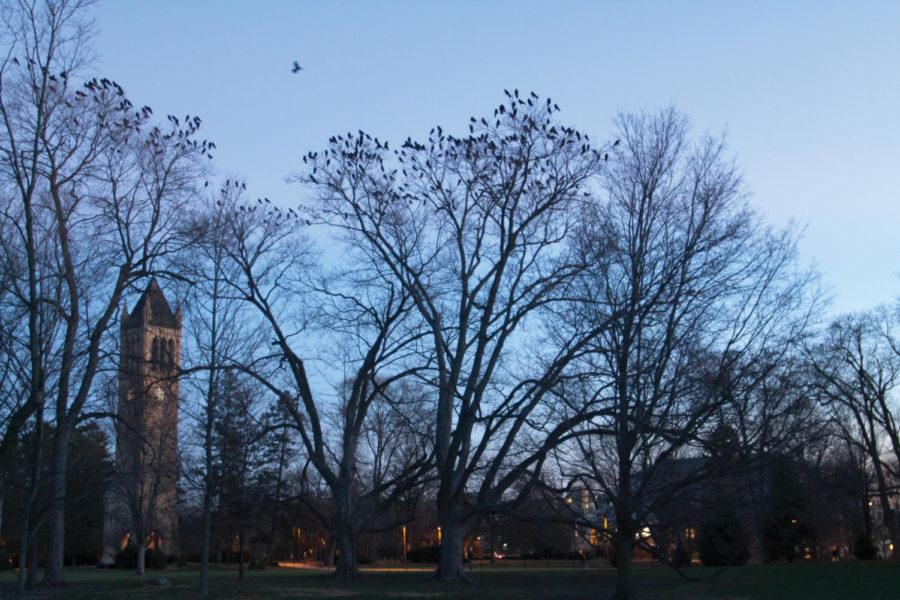Crows try to inhabit ISU campus
Photo: Megan Wolff/Iowa State Daily
Facilities Planning and Management works to control the pest population on Iowa State’s campus. Right now, several methods are in use to scare away the crows that try to inhabit the trees of Iowa State through the winter.
December 5, 2012
Walking around campus at night, one may hear the eerie sound of birds ringing out through campus. These fake calls are strategically timed and placed around campus to keep crows from making Iowa State their new home.
Every fall, Facilities Planning and Management puts out these pest control systems to keep thousands of crows off campus. This is done by deploying bird distress call systems, lights and inflatable scarecrows. Slap boards are also used to imitate the sound of a shotgun. All of these are easily movable and can be relocated anywhere on campus.
Lester Lawson, manager of facilities maintenance, said these tactics work but have to be switched up frequently. A crew comes in every morning to move the devices and disturb the crows.
“Most people think crows are dumb, but they are quite smart. It’s an everyday battle this time of year,” Lawson said.
The crows come to Iowa State because they find it warmer here and have plenty of places to make winter nests.
“Once the crows find a place they like, they tend to stay there most of the winter,” Lawson said. “That is why it’s important to start the deterrents early.”
It is important to keep crows off campus because they create a mess, Lawson said. With a large number of crows comes a large amount of bird droppings, causing a mess on busy sidewalks.
Not only are the droppings unpleasant to walk through, they are also a health hazard. According to the Campus Service website, bird droppings carry several disease-causing organisms.
The most common is a fungus called Histoplasma Capsulatum. When the droppings are disturbed, the fungus becomes airborne and can cause an infection in the lungs if it is inhaled.
“Not only do we disturb the crows because of the mess they make, but also [because] it’s eerie to see a couple hundred in a tree,” Lawson said.
To help curb the crow problem, Lawson said students can stomp their feet and make loud noises to let the crows know they are not welcome here. In the meantime, it’s just a matter of patience until the crows are gone.
The management of the crows on campus is done by Facilities Management and Planning with some help from outside companies, depending on the problem severity. Everything is paid for by program’s yearly budget.
Facilities Management and Planning also takes care of other pests on campus, such as raccoons, bats and insects.







